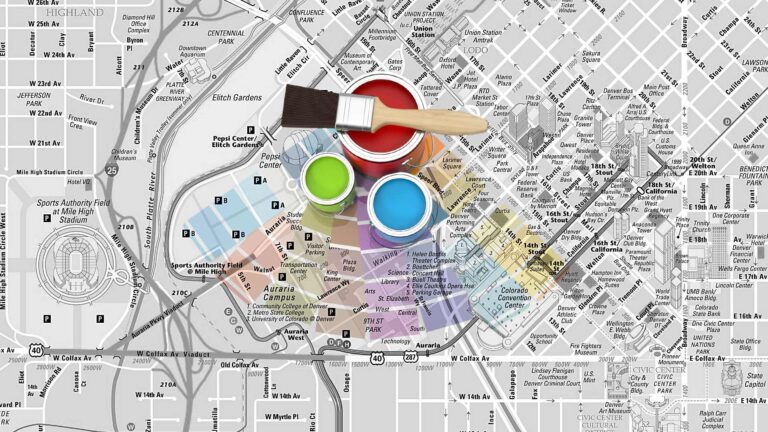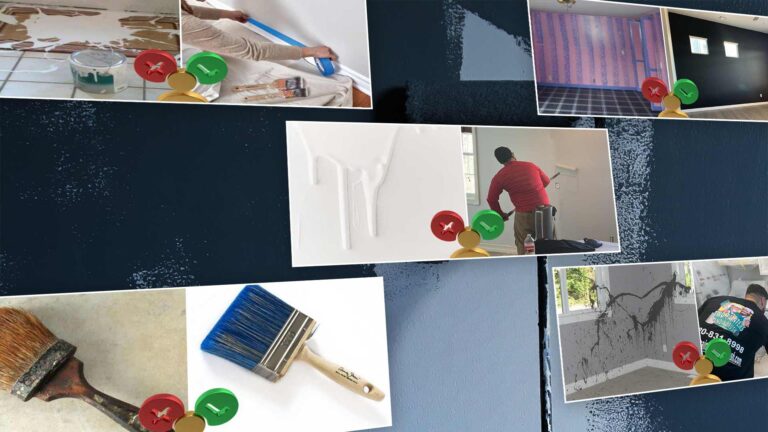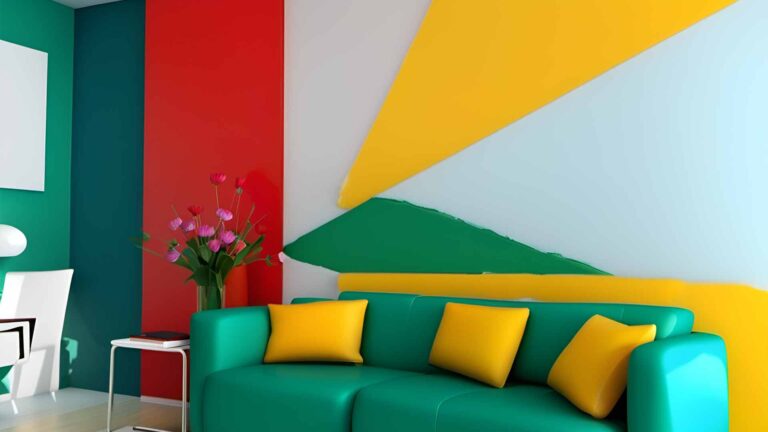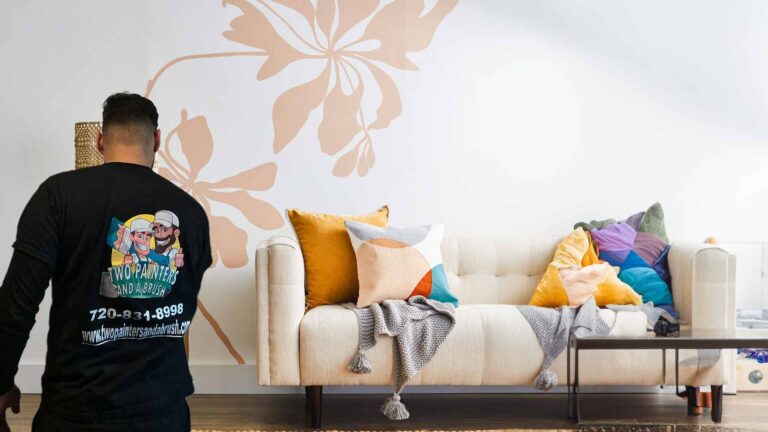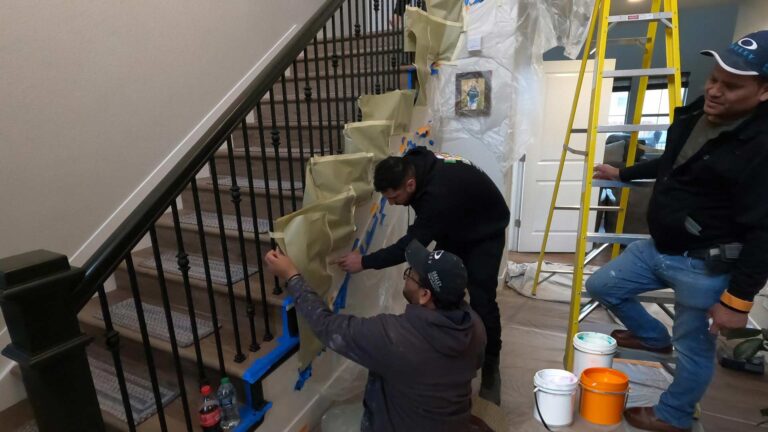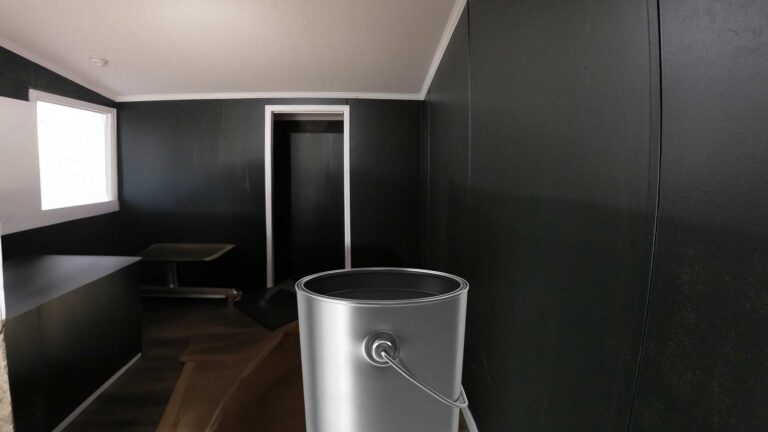Painting your home in Denver can be an exciting opportunity to showcase your creativity and personal style. But with thousands of paint colors available, making the right choice can be overwhelming. That’s where mixing paint colors comes in. By blending different hues, you can create a unique palette that perfectly suits your Denver home. But how do you get started? Let’s dive into the art of mixing paint colors.
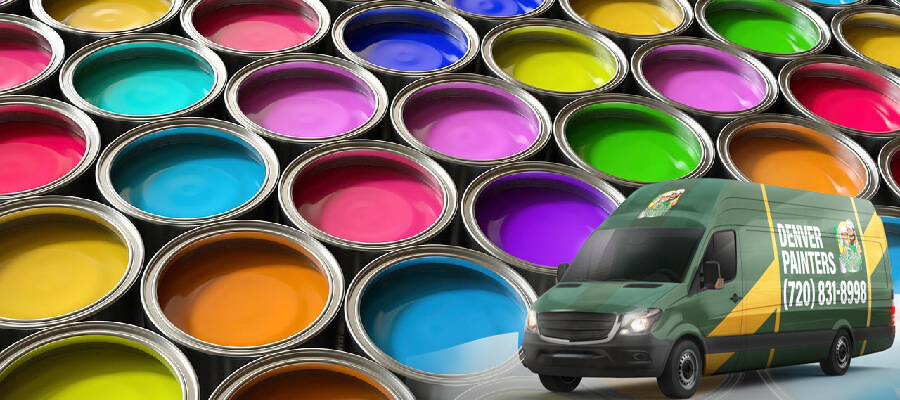
Understanding Color Basics
Before you start mixing, it’s important to understand some color basics. Every color can be traced back to three primary colors: red, blue, and yellow. By mixing these primary colors, we can create secondary colors: green, orange, and purple. Further combinations and variations give us a virtually limitless spectrum of colors.
The color wheel is a handy tool that visually demonstrates these relationships. Knowing how colors relate to each other on this wheel can help you create balanced and harmonious color schemes. For instance, colors opposite each other on the wheel (complementary colors) can create a vibrant, high-energy look, while colors next to each other (analogous colors) can create a harmonious, peaceful feel. If you’re interested in diving deeper into color theory, be sure to check out our post on The Psychology of Color.
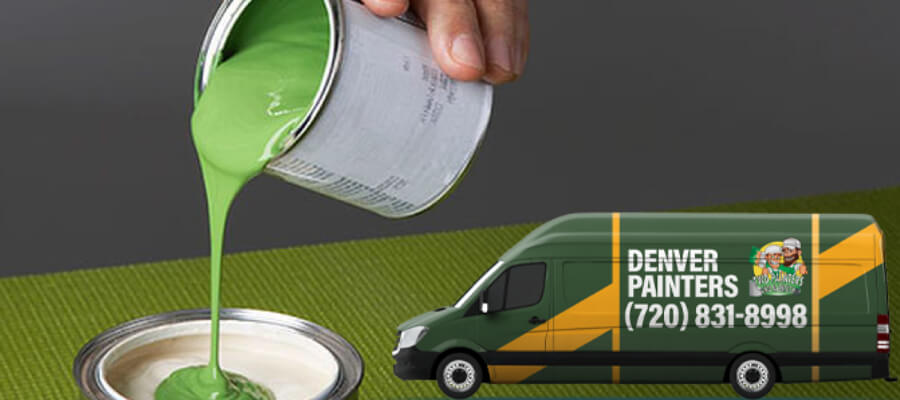
The Process of Mixing Paint Colors
Mixing paint colors is an art in itself. Start by choosing two colors that you’d like to combine. It’s usually best to start with a base color and then gradually add a second color until you achieve your desired hue. Remember, it’s easier to darken a color by adding a darker paint than it is to lighten it, so start with the lighter color.
For example, if you want to create a soft sage green for your kitchen—a color that made it to our 2023 Guide to Which Color Paint Is Best for the Kitchen, start with a base of white or light yellow. Then, gradually add green paint, stirring thoroughly each time, until you achieve your desired shade.
If you’re mixing a large quantity of paint for a big project like exterior painting, use a 5-gallon bucket, which you can buy from Home Depot or Lowes, and a drill with a mixing paddle attachment. For smaller quantities, a paint tray or even a disposable cup will do.
Always remember to keep track of how much of each color you’re using, so you can replicate the color later if needed. And once you’ve mixed your perfect color, test it out in a small area and view it under different lighting conditions before committing to a large-scale paint job.
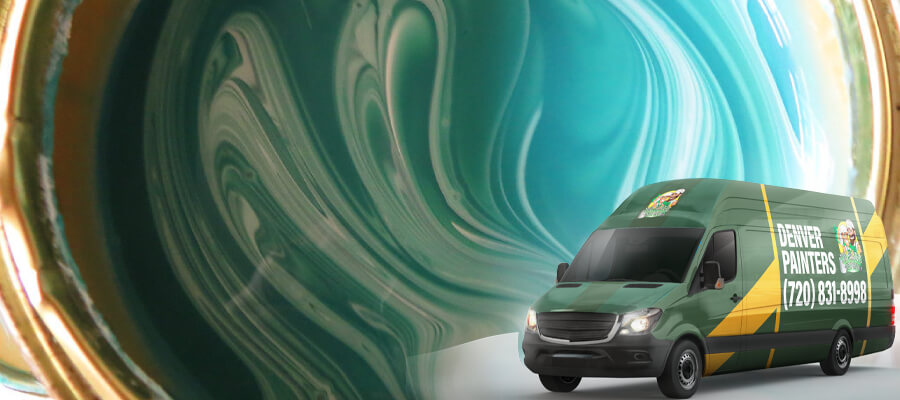
Practical Tips for Mixing Paint Colors
Planning and patience can go a long way when it comes to mixing paint colors. Here are some cool and practical tips to help you get started:
- Start small: When you’re first starting out, mix small amounts of paint until you’re confident in your color choice. This way, you won’t waste paint if the color doesn’t turn out as you expected.
- Keep notes: Keep track of the exact amounts of each color you use, so you can replicate your custom color later.
- Test it out: Before you start painting a large area, paint a small swatch on the wall and see how the color looks in different light conditions.
- Mix enough paint for your project: Once you’re happy with your color, make sure you mix enough to complete your project. It can be challengingquote(“Practical Tips for Mixing Paint Colors”, “to replicate the exact same color.”)
- Be patient: Mixing paint colors is a creative process that requires patience. Take your time and enjoy the journey!
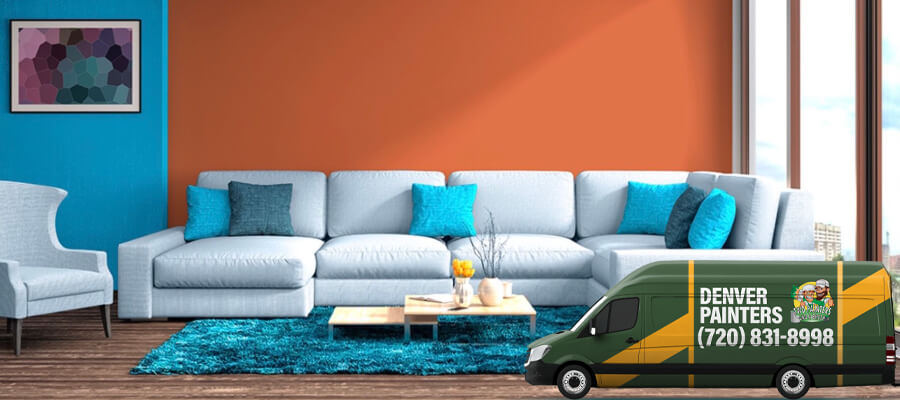
Creating a Cohesive Color Scheme
One of the biggest challenges when painting your Denver home is creating a cohesive color scheme. How do you choose colors that not only work well together, but also create the right mood and atmosphere?
One tried-and-true rule in interior design is the 60/30/10 rule. The dominant color should always be 60%, the secondary 30% and the last 10% can be an accent color. This creates a balanced look with just the right amount of contrast and variation. For more tips on creating a harmonious color scheme, check out our post on What Painters Do: Tips & Secrets.
In open-concept homes, creating a color flow can be particularly challenging. One tip is to use different shades or tones of a single color in different areas of the home. For instance, you might use a light blue in the living room, a slightly darker blue in the kitchen, and a bold blue as an accent color in the dining room. This creates a sense of cohesion without making the spaces feel too similar. For more advice on painting open-concept homes, see our Denver Painters Blog.
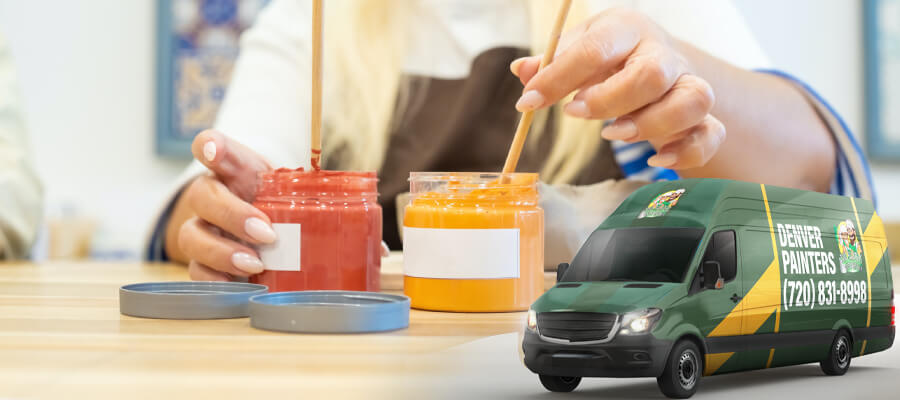
Frequently Asked Questions About Mixing Paint Colors
What is it called when you mix paint?
When you blend two or more paints together, this process is known as paint mixing. This allows you to create new hues, tones, and shades that are not readily available in pre-made paints.
What is the theory of color mixing?
Color mixing theory refers to the principles and guidelines that artists use to understand how different colors blend together to create new ones. It encompasses concepts like the color wheel, primary, secondary, and tertiary colors, and the difference between additive and subtractive color mixing.
How do you learn color mixing?
Learning color mixing often involves hands-on experimentation and practice. You might start by mixing primary colors (red, yellow, and blue) to create secondary colors (green, orange, and purple). Over time, you can learn to create more nuanced hues, tints, and shades. There are also many excellent resources and courses available online, start with YouTube, that can guide you through the process.
Is color mixing a skill?
Absolutely! Color mixing is a vital skill for artists, designers, and decorators. It requires a good eye for color and an understanding of how different hues interact. Like any skill, it can be improved with practice and experience.
Is learning colors a cognitive skill?
Yes, learning colors is a cognitive skill that involves recognizing and naming different hues. This great skill is usually developed in early childhood and is often one of the first ways that children learn to categorize and make sense of the world around them.
What is the learning outcome of color mixing?
The main learning outcome of color mixing is an enhanced understanding of colors and how they interact. This knowledge can be applied in many areas, from art and design to marketing and branding. It can also foster creativity and experimentation.
Is mixing colors science?
Yes, mixing colors involves both art and science. The science aspect comes into play when understanding light wavelengths and how our eyes perceive different colors. The art aspect involves using this knowledge to create appealing and effective color combinations.
What color cannot be mixed?
There are some colors, known as primary colors, that cannot be made or created by mixing other colors. In traditional color theory, these primary colors are red, yellow, and blue. In the RGB color model used in screen displays, the primary colors are blue, red, and green.
What is the hardest color to mix?
Some people find it challenging to mix neutral colors like browns and grays. These colors often require a delicate balance of various hues. Similarly, achieving the right tone for skin colors can be difficult as it requires a complex mix of different shades.
Have more questions about mixing paint colors? Check out our Expert Tips for a Flawless Exterior Paint Job. And if you’re ready to start your painting project, don’t hesitate to contact Two Painters and a Brush for expert advice and a free, no-obligation quote!
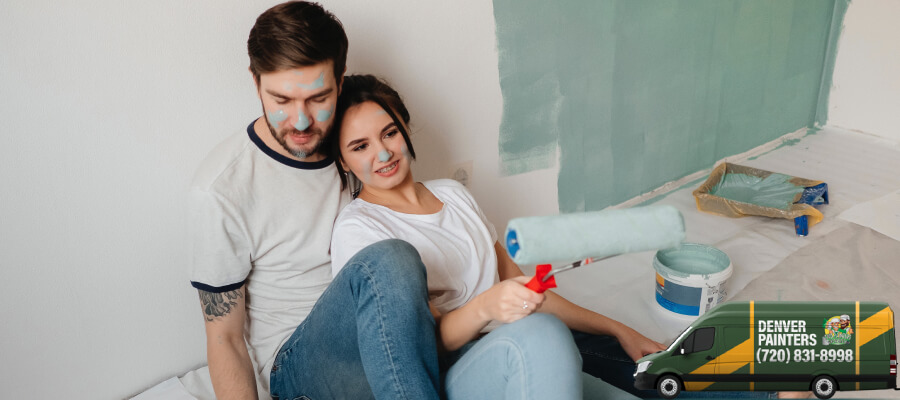
Conclusion
Mixing paint colors is a creative and satisfying process that can help you achieve the ultimate look for your Denver home. By practicing, you can create a unique color palette that truly reflects your personal style.
Whether you’re planning an interior painting project, thinking about updating your kitchen cabinets, or considering a popcorn ceiling removal, Two Painters and a Brush is here to help. Our team of professional painters in Denver can guide you through this colorful process and ensure a flawless finish.
Remember, your home is a canvas, and you’re the artist. Happy painting!



